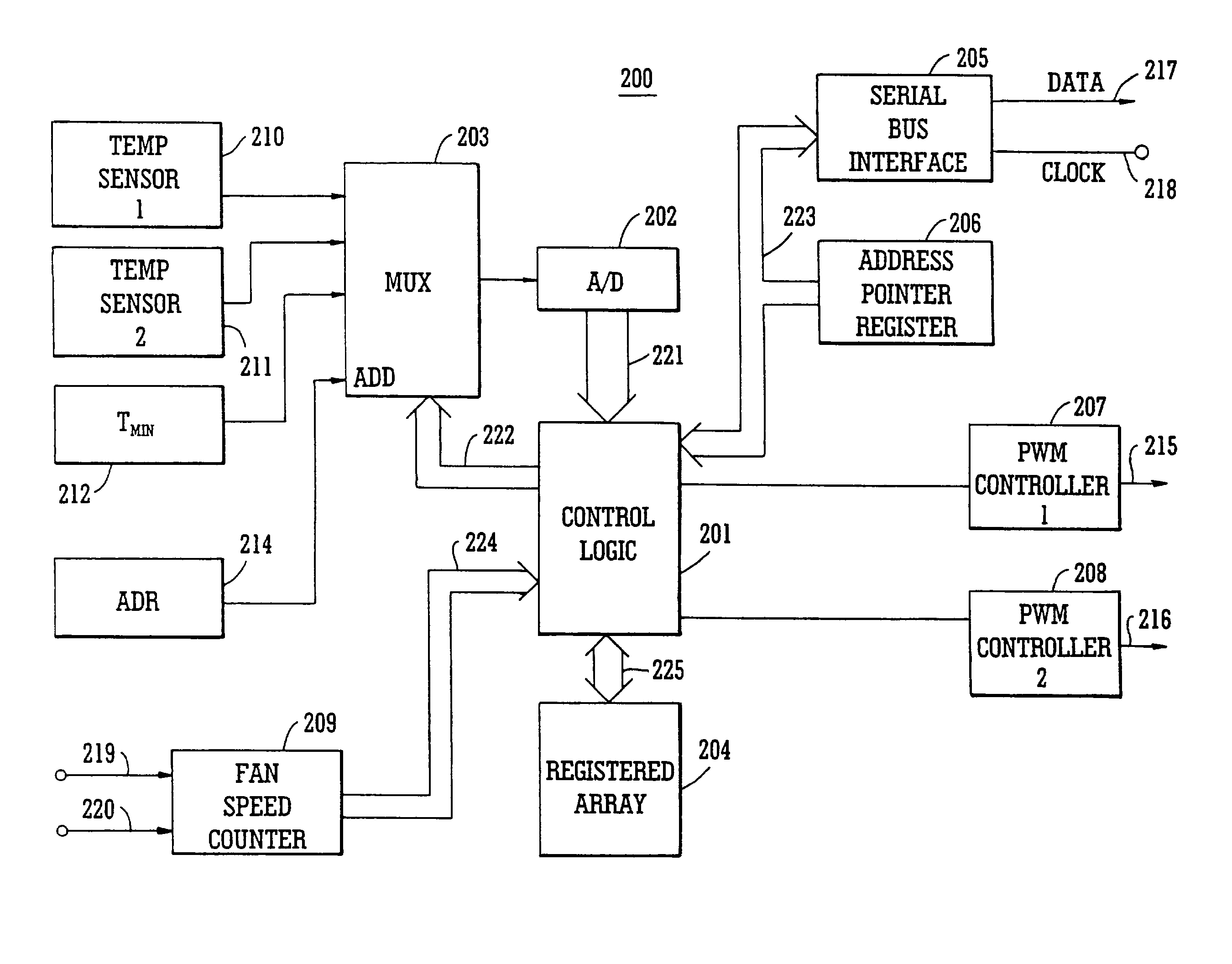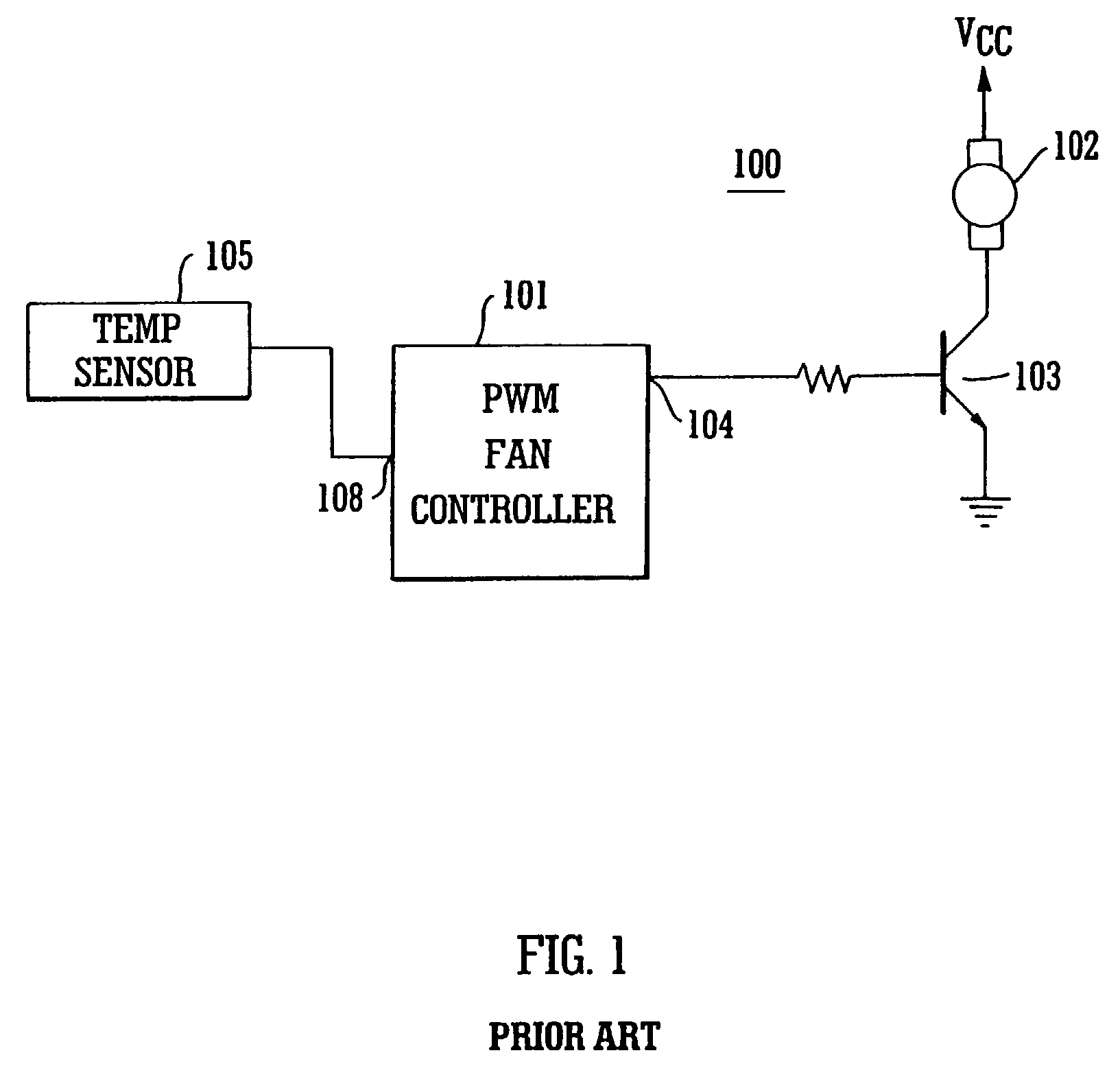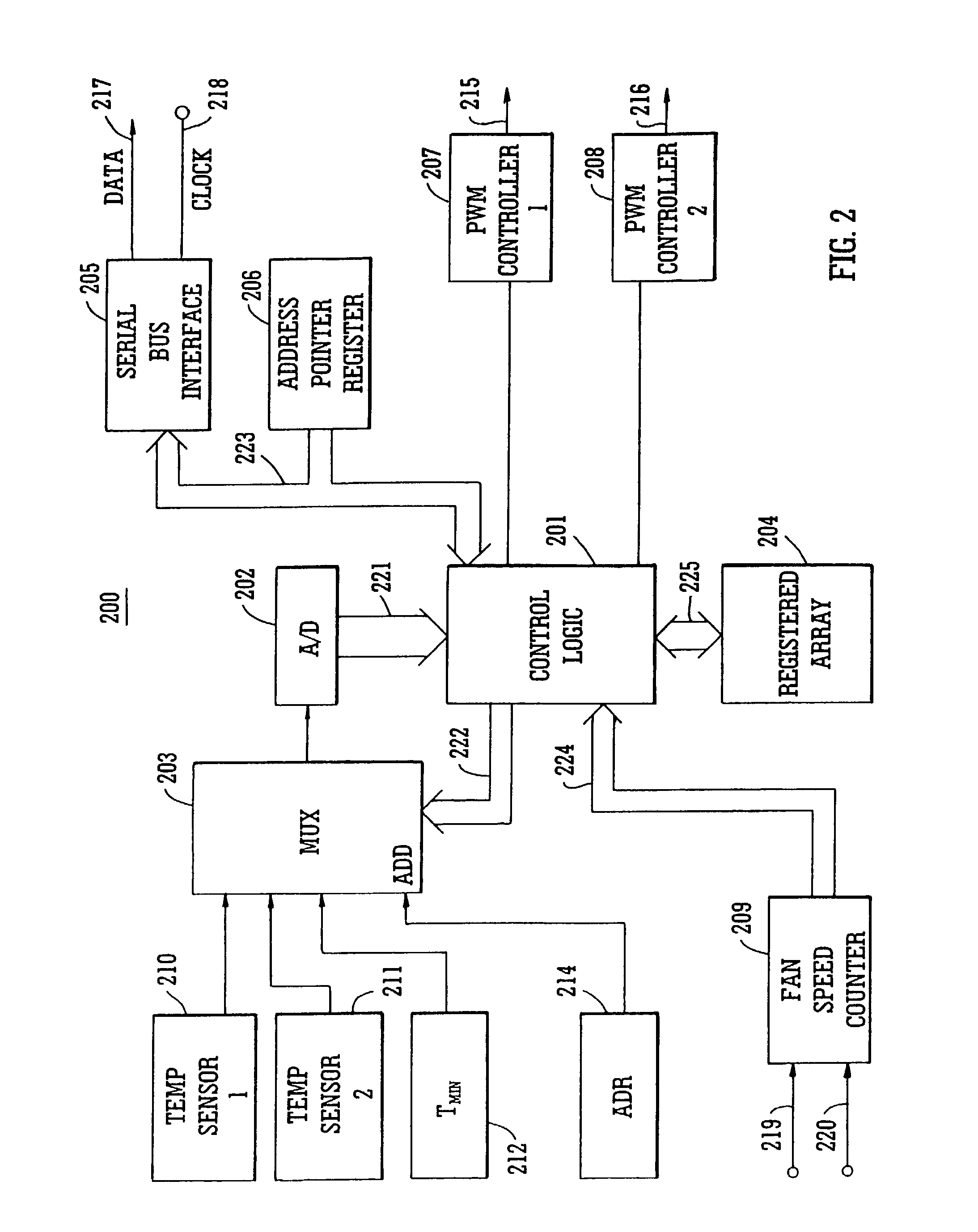Fan speed control system
a control system and fan technology, applied in the direction of dynamo-electric converter control, electrical apparatus casing/cabinet/drawer, instruments, etc., can solve the problems of hardly an optimal solution, power consumption considerations primarily applied to portable equipment using battery power, etc., to prolong the life of the fan used for cooling, reduce noise, and reduce power consumption
- Summary
- Abstract
- Description
- Claims
- Application Information
AI Technical Summary
Benefits of technology
Problems solved by technology
Method used
Image
Examples
Embodiment Construction
[0045]In accordance with the present invention, a fan speed control system is described that provides distinct advantages when compared to those of the prior art. FIG. 1 illustrates a fan control system well known in the prior art, generally depicted by the numeral 100. A pulse-width modulation (PWM) controller integrated circuit (IC) 101 has as its primary control input a signal from a temperature sensor 105, that is received over input signal line 108. The temperature sensor 105 may be an appropriately biased thermistor, for example, selected to have a known resistance at a predetermined reference temperature (25° C., for example). Of course, even though the present system utilizes temperature information for fan speed control purposes, it would also be possible to use other operating parameters, such as, for example, air flow at selected locations within an equipment enclosure. Air flow velocity information could readily be represented by a varying voltage.
[0046]It is well-known ...
PUM
 Login to View More
Login to View More Abstract
Description
Claims
Application Information
 Login to View More
Login to View More - R&D
- Intellectual Property
- Life Sciences
- Materials
- Tech Scout
- Unparalleled Data Quality
- Higher Quality Content
- 60% Fewer Hallucinations
Browse by: Latest US Patents, China's latest patents, Technical Efficacy Thesaurus, Application Domain, Technology Topic, Popular Technical Reports.
© 2025 PatSnap. All rights reserved.Legal|Privacy policy|Modern Slavery Act Transparency Statement|Sitemap|About US| Contact US: help@patsnap.com



